It was never meant to simply go from A to B. The automobile is the symbol par-excellence of the consumer society. For most, it is a measure of our standing on the social and economic scale and the strongest indicator of our economic status on the pecking order. Automobile reliance is obviously wasteful, a metaphor for the consumerist society where built in obsolescence and “change” results in phrases like ” endless cycle of violence” put into its proper context. Our relationship to cars and our dispositions with regard to our consumption of the products fits very snugly into the theory of Joseph Heath which reaches back to Thorstein Veblen. Basically, it states that consumption, contrary to accepted thought, is not about conformity, but about distinction. And that people consume to set themselves apart from others. It explains why certain auto luxury brands such as Infinity have over 20% credit rejection rates. The problem, as Heath states, is that all these comparative preferences generate competitive consumption.
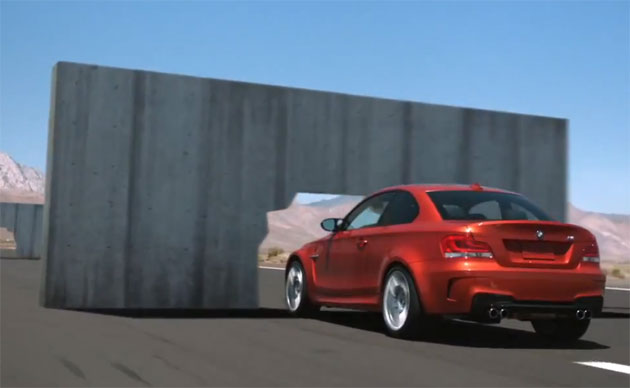
Read More:http://www.autoblog.com/2011/06/09/bmw-1-series-m-coupe-is-off-the-wall-s/---“It’s for all the potential BMW buyers,” he said. “The younger demographic has posters of Porsches and Ferraris in their bedrooms. You want them to start having a dream of buying a BMW at a younger age, so that when they grow up it’s a no brainer about what you want to buy. You want to reach a wider audience — people who will be advocates of the brand — and that includes kids.” The benefit of online advertising is that it gives creative leeway not available under television’s legal standards — car tricks, high-speed feats of daring, etc. BMW Canada has no intention of running it on TV, but teaser spots are running in Canadian cinemas, which are also subject to different regulations and standards.---
Yves Engler:Even at a standstill, automobiles remain inefficient. This time it is not energy wasted, rather living space. The average car is parked 95 percent of the time. Buses and trains, on the other hand, transport passengers well after individuals arrive at their destination (and pedestrians hold onto their legs after their journey is done). Buses, trains, streetcars, bikes as well as pedestrians use space and infrastructure more efficiently than personal cars, whether moving or at a standstill. At approximately four meters across, road lanes are roughly the same width as railroad tracks, yet an equivalent length of rail can carry 20 times the number of passengers….
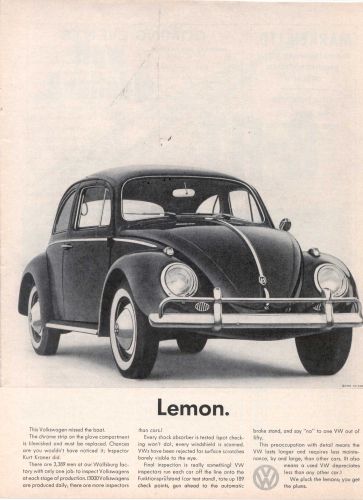
image: http://www.icmcreative.co.uk/posts/view/421 Read More:http://this.org/magazine/2002/11/01/the-rebel-sell/---This sort of “anti-advertising” was enormously successful in the 1960s, transforming the VW bug from a Nazi car into the symbol of the hippie counterculture and making the Volvo the car of choice for an entire generation of leftist academics. Similar advertising strategies are just as successful today, and are used to sell everything from breakfast cereal to clothing. Thus the kind of ad parodies that we find in Adbusters, far from being subversive, are indistinguishable from many genuine ad campaigns. Flipping through the magazine, one cannot avoid thinking back to Frank’s observation that “business is amassing great sums by charging admission to the ritual simulation of its own lynching.”---
…In Les Québecois au Volant, c’est mortel, Montreal city council, Richard Bergeron, argues that contrary to popular understanding, mass transit was condemned for being too efficient. It gave too much service for too little investment. Spending on buses yields significantly more travel than an equivalent investment in cars since they are used more intensively. A $250,000 bus can carry individuals on about 100,000 major person/journeys annually, while a $25,000 car would probably not make 1,000 such journeys in a year. In other words, the investment on the bus is ten times as efficient as the spending on the car. Read More:http://www.zcommunications.org/the-wastefulness-of-the-automobile-by-yves-engler
Heath, Potter:Once we acknowledge the role that distinction plays in structuring consumption, it’s easy to see why people care about brands so much. Brands don’t bring us together, they set us apart. Of course, most sophisticated people claim that they don’t care about brands—a transparent falsehood. Most people who consider themselves “anti-consumerist” are extremely brand-conscious. They are able to fool themselves into believing that they don’t care because their preferences are primarily negative. They would never be caught dead driving a Chrysler or listening to Celine Dion. It is precisely by not buying these uncool items that they establish their social superiority. Read More:http://this.org/magazine/2002/11/01/the-rebel-sell/ aa
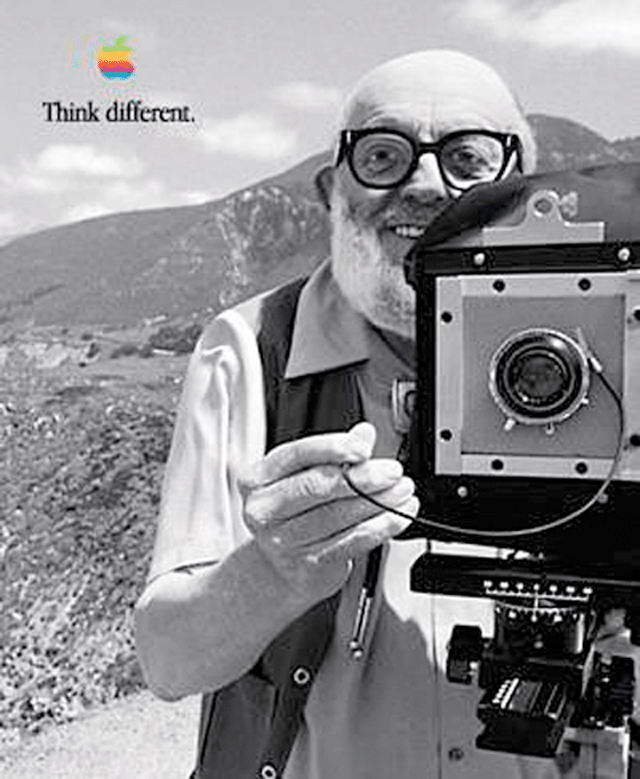
Ansell Adams. There were many beautiful images in this campaign; except most of the people were dead and the effort was all in the service of selling a stupid computer.
So, most of us actively participate in the behavior that drives competitive consumption. There are those “early adopters” who will pay a premium for an electric or hybrid vehicle even if there is more environmental cost to producing it. There is a fear of losing social status that results in this treadmill effect of chasing the new, and staying ahead of the curve.
…“Walls,” the first segment of a trilogy being unveiled over the summer, shows the limited-edition performance vehicle navigating a stretch of desert highway dotted with giant concrete obstacles. Each barrier has a cutout the size of a car in the centre, positioned at varying angles, and viewers watch as the 1 Series executes hairpin turns and drifts, sliding through the holes from different and precise angles….Since the release of “Walls” a month ago, the white-knuckle video has racked up close to 2 million views on YouTube and countless mentions and links on blogs and social networking sites, most of them centring on how much of the spot is real and how much is computer-generated animation. (Or styrofoam, in the case of speculation about the walls.) Read More:http://business.financialpost.com/2011/07/08/bmw-goes-to-the-walls/
The irony is that we can easily condemn the waste in the automobile industry as an economic activity; from the advertising revenue, to the pollution, to its role as a cash cow for governments and a regressive form of taxation on the poor. We all support the notion of “progress” , yet ignore or avoid confronting the extent to which our social habits and patterns of consumption impede the ability of our institutions to act effectively with respect to the environment and the broader need for effective and pervasive public transportation.
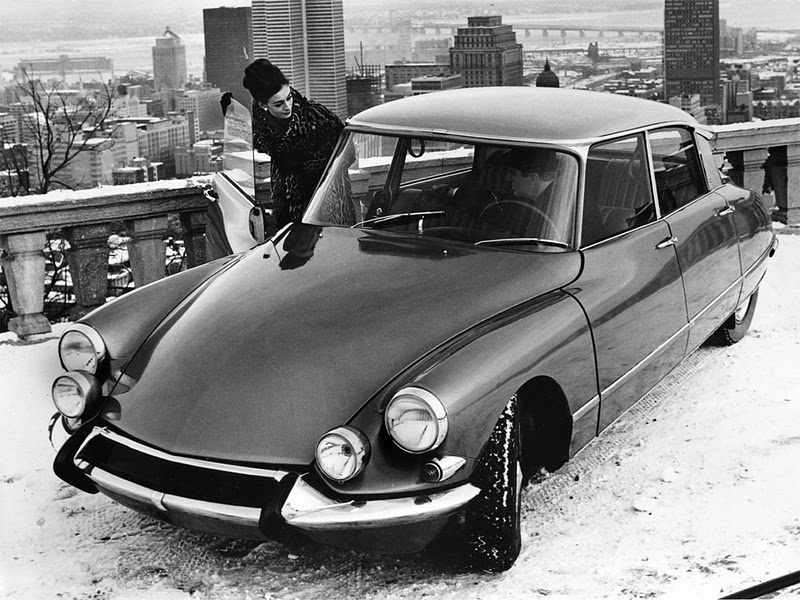
Roland Barthes91957):I think that cars today are almost the exact equivalent of the great Gothic cathedrals: I mean the supreme creation of an era, conceived with passion by unknown artists, and consumed in image if not in usage by a whole population which appropriates them as a purely magical object. It is obvious that the new Citroen has fallen from the sky inasmuch as it appears at first sight as a superlative object .. We must not forget that an object is the best messenger of a world above that of nature: one can easily see in an object at once a perfection and an absence of origin, a closure and a brilliance, a transformation of life into matter (matter is much more magical than life), and in a word a silence which belongs to the realm of fairy-tales. The D.S. - the "Goddess" - has all the features (or at least the public is unanimous in attributing them to it at first sight) of one of those objects from another universe which have supplied fuel for the neomania of the eighteenth century and that of our own science-fiction: the Deesse is first and foremost a new Nautilus. This is why it excites interest less by its substance than by the j
ion of its components. It is well known that smoothness is always an attribute of perfection because its opposite reveals a technical and typically human operation of assembling: Christ's robe was seamless, just as the airships of science-fiction are made of unbroken metal. Read More:http://www.citroenet.org.uk/passenger-cars/michelin/ds/32.html
The BMW “Walls” advertising on the web is an example of this wheel of consumerism, this search for, and forcing people to find some new way- here attenuated by unregulated content on the web- of demarcating brands and consumers from their social inferiors, reinforcing the need for a system of distinction that can serve this function without seemingly being too obvious about its intent.
ADDENDUM:
Heath, Potter:We find ourselves in an untenable situation On the one hand, we criticize conformity and encourage individuality and rebellion. On the other hand, we lament the fact that our ever-increasing standard of material consumption is failing to generate any lasting increase in happiness. This is because it is rebellion, not conformity, that generates the competitive structure that drives the wedge between consumption and happiness. As long as we continue to prize individuality, and as long as we express that individuality through what we own and where we live, we can expect to live in a consumerist society.
It is tempting to think that we could just drop out of the race, become what Harvard professor Juliet Schor calls “downshifters.” That way we could avoid competitive consumption entirely. Unfortunately, this is wishful thinking. We can walk away from some competitions, take steps to mitigate the effects of others, but many more simply cannot be avoided….
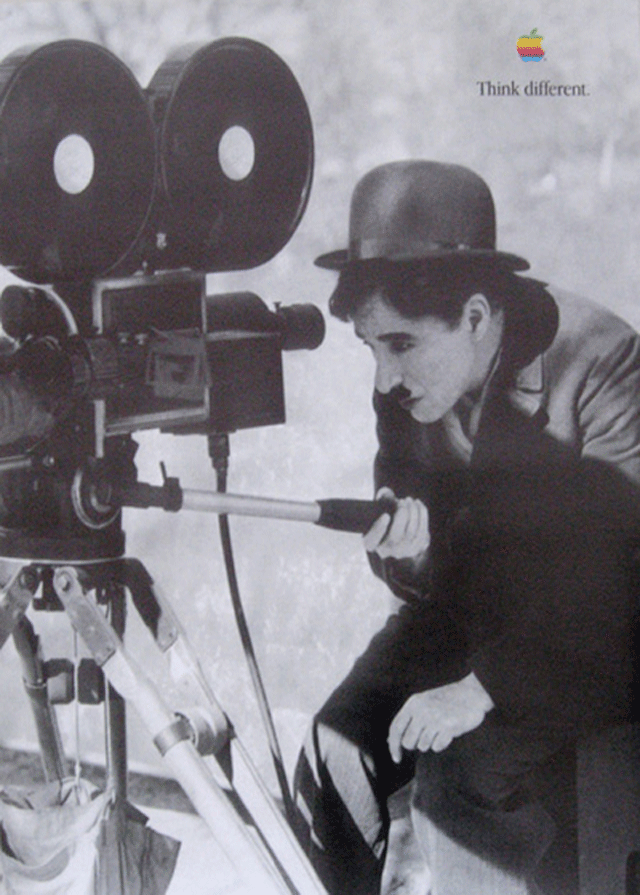
Read More: http://creativecriminals.com/print/apple-think-different/---We are not only talking about an original idea or a beautiful ad, the campaign actually worked, and how… During the 90’s Apple was in a crisis, and with only one campaign they have managed to climb out of this slump. Steve Jobs once said: “It only took 15 . . . 30 . . . maybe 60 seconds to re-establish Apple’s counter-culture image that it had lost during the 90s”.---
…In many cases, competition is an intrinsic feature of the goods that we consume. Economists call these “positional goods”—goods that one person can have only if many others do not. Examples include not only penthouse apartments, but also wilderness hikes and underground music. It is often claimed that a growing economy is like the rising tide that lifts all boats. But a growing economy does not create more antiques, more rare art, or more downtown real estate, it just makes them more expensive. Many of us fail to recognize how much of our consumption is devoted to these positional goods.
Furthermore, we are often forced into competitive consumption, just to defend ourselves against the nuisances generated by other people’s consumption. It is unreasonable, for example, for anyone living in a Canadian city to own anything other than a small, fuel-efficient car. At the same time, in many parts of the North America, the number of big SUVs on the road has reached the point where people are forced to think twice before buying a small car. The SUVs make the roads so dangerous for other drivers that everyone has to consider buying a larger car just to protect themselves. read More:http://this.org/magazine/2002/11/01/the-rebel-sell/aaa

---The 1959 Peugeot 403 convertible Peter Falk used to drive in Columbo is pretty much left to rot on a Universal parking lot. This is just a shame. This car is part of TV history and should be treated as such. I took this picture last night. The canvas from the top is now almost all gone.--- Read More:http://www.pplume-blog.com/2011/06/columbos-peugeot-403.html
—————————————————
Thomas Frank:Consumerism is no longer about “conformity” but about “difference.” Advertising teaches us not in the ways of puritanical self-denial (a bizarre notion on the face of it), but in orgiastic, never-ending self-fulfillment. It counsels not rigid adherence to the tastes of the herd but vigilant and constantly updated individualism. We consume not to fit in, but to prove, on the surface at least, that we are rock `n’ roll rebels, each one of us as rule-breaking and hierarchy-defying as our heroes of the 60s, who now pitch cars, shoes, and beer. This imperative of endless difference is today the genius at the heart of American capitalism, an eternal fleeing from “sameness” that satiates our thirst for the New with such achievements of civilization as the infinite brands of identical cola, the myriad colors and irrepressible variety of the cigarette rack at 7-Eleven….

---Veblen conceives of status among humans as a stratification system, no different in principle from the hierarchies that structure social relations throughout the animal kingdom (from the “pecking order” among chickens to the dominance relations among our closest primate ancestors). It is grounded in judgments that establish an invidious comparison, which Veblen defines as a “comparison of persons with a view to rating and grading them in respect of relative worth or value” (1899, 34).Read More:http://homes.chass.utoronto.ca/~jheath/veblen.pdf image:http://www.automopedia.org/2009/06/26/10-most-offensive-car-ads/
As existential rebellion has become a more or less official style of Information Age capitalism, so has the countercultural notion of a static, repressive Establishment grown hopelessly obsolete. However the basic impulses of the countercultural idea may have disturbed a nation lost in Cold War darkness, they are today in fundamental agreement with the basic tenets of Information Age business theory. So close are they, in fact, that it has become difficult to understand the countercultural idea as anything more than the self-justifying ideology of the new bourgeoisie that has arisen since the 1960s, the cultural means by which this group has proven itself ever so much better skilled than its slow-moving, security-minded forebears at adapting to the accelerated, always-changing consumerism of today. The anointed cultural opponents of capitalism are now capitalism’s ideologues. Read More:http://www.nytimes.com/books/first/f/frank-dissent.html









 COMMENTS
COMMENTS



